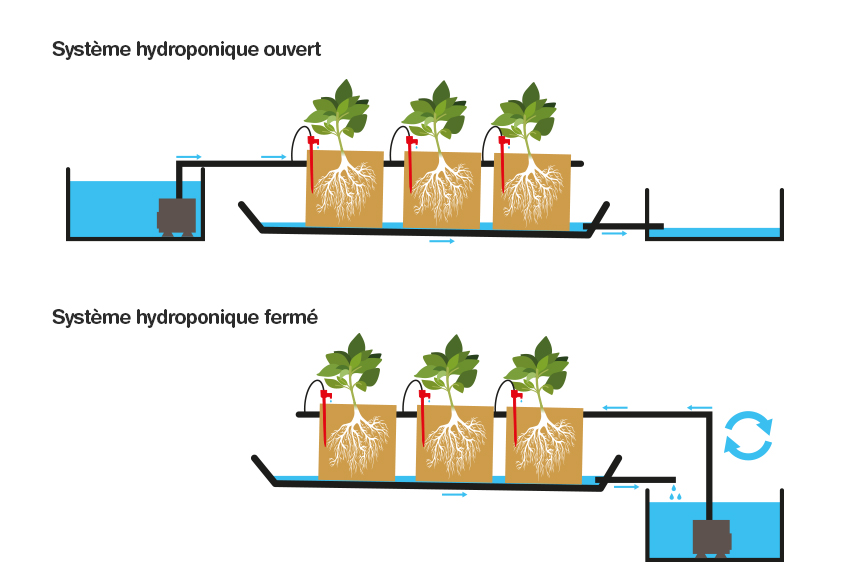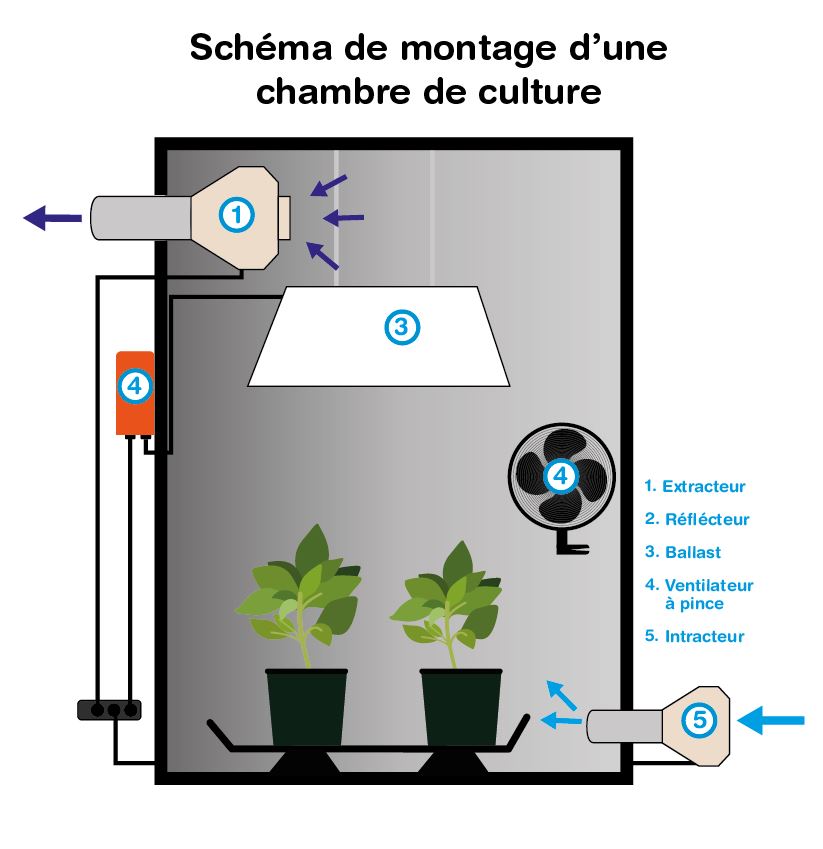Hydroculture or Growing at Home
To be able to create your own garden or grow your own tomatoes, you have two choices.
First of all, the best known and customary way is to grow in your own garden, outside. However, not all of us have an outdoor garden. Not all of us live in a house. Then comes the second choice: hydroculture, commonly known as indoor growing, or even indoor growing
What is hydroponics?
This technical term probably doesn't mean anything to you, but we deal with hydroculture on a daily basis, without knowing it. Thanks to this gardening technique, we can eat fruit and vegetables every day: the horticultural industries, which fill the stalls of our supermarkets, grow multitudes of these plant foods with maximum and economical yield. This allows us, as consumers, to have a wide choice for our greatest taste pleasure.
Let's imagine a plant in its natural state that blooms on a cliffside, on the rock of a waterfall. This phenomenon has shown that it is possible to cultivate above ground, i.e. without soil, and with or without a neutral or inert substrate: this is the principle of hydroculture.
This way of gardening offers better control over the development of the plant: the grower sees the stem, leaves and flower, fruit or vegetable, but not only. Indeed, being more easily accessible and visible, he can also take care of his roots!
Another advantage of hydroculture: you can grow at home in your apartment, in a grow room!
The different practices of hydroculture
An indoor gardener therefore has two main possible methods of growing at home, in one of his rooms :
- - hydroponics, coming from the Greek terms "hydro" for "water," and "ponos" meaning "work. »
- - aeroponics (which is an advanced form of hydroponics), which is a form of indoor aerial cultivation.
Hydroponics:
In concrete terms, hydroponics is "the cultivation of terrestrial plants using nutrients without the support of soil. "That is, the roots are immersed in a nutrient solution (most often a mixture of fertilizer and water) or grown in a substrate free of any nutrient content (e.g., a fertilizer solution)coconut fibre, clay balls, rock wool, perlitesetc.). The plants then develop thanks to the "work of water," thus optimizing their supply of nutrients and oxygen.
There are different hydroponic cultivation techniques:
- - open, the solution made with your fertilizer is not recycled since it makes only one pass through your hydroponic system. This method requires a lot of water, which is economically and ecologically problematic in "indoor";
- - closed, the installed hydroponic system allows the nutrient solution to be reused "in a loop. "This is a more economical, ecological and better adapted alternative for indoor growing;
- - active, in an open or closed system, the water continuously distributes what the plants need, moving from the tank to the substrate, then to the roots, using a water or air pump ;
- - the stagnant liquid fertilizer mixture reaches the plant by means of a passive capillary system. The plant grows in its substrate, above the reservoir. A practice that we do not recommend as it encourages the development of bad micro-organisms for the plant.
>>> see Hydroponic growing for further explanations.

Aeroponic hydroponics:
This method of improved hydroponics takes up its different techniques, requiring more knowledge and a lot of practice.
The plants are suspended in their baskets filled with clay beads, for example. In this way, the roots are in the open air and grow immersed in a damp mist. This mist is created by misters that continuously sprinkles the plants with water and nutrients. In addition, aeroponics allows better oxygen absorption by the roots.
>>> see Aeroponics for further explanations.

What does hydroponics / indoor hydroponics look like?
Now, let's look at an example of a hydroponic system that can be installed at home:
- - first of all, the grow tent (explanation here) to be placed in a corner of a temperate room. It will enclose and protect your indoor garden;
- - then, set up the ventilation system: fan(s), fan(s), air vents and a extractors/intractors of air (explanation here), of sheaths with their accessories, and a charcoal filter for odours (explanation here);
- - then horticultural lighting: ballast(s) with appropriate lamp(s) according to the germination/budding, growth or flowering phase. The reflector/collection (explanation here) which redirects and spreads the light from the bulb ;
- - the tools of climate control and lighting;
- - but above all the primordial elements: plants and their containers!
Your hydro cultivation is done in tanks that can be more or less voluminous depending on the desired crop and the space available. Once you have determined this and which hydroponic system to choose (a tide table, NFT system, drip, or aeroponic system), the installation of the irrigation system will be self-evident
We hope we have provided you with as much general information as possible about what hydroculture is all about. In order to deepen your knowledge of hydroponics, we advise you to visit the other pages of our tips section Indoor Discount. As well as the beginner's guide Introduction to Hydroponics or the very complete Hydroponics for All. All you have to do is get started!
